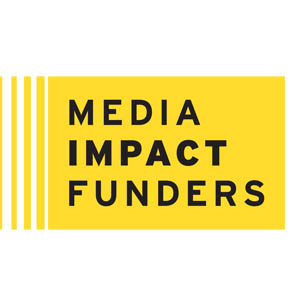
Wichita Community Foundation, a member of MIF since July 2021, was funded in 1986 and partners with people, families, and organizations in Kansas to devote resources to causes that matter. The News and Information Fund at WCF invests in strengthening the local news ecosystem, leading to a more informed and engaged city. Last summer, WCF made its single largest grant—more than $1 million—to launch The Wichita Beacon, a nonprofit news organization dedicated to public service journalism.
In this Q&A, Courtney Bengtson, WCF’s Director of Strategic Initiatives talks about how media fits into the organization’s overall goals and the importance of journalism for healthy communities.
Media Impact Funders (MIF): How does media fit into the organization’s overall goals?
Courtney Bengston: Our mission is to advance our community by partnering with individuals and organizations to devote resources to causes that matter; local news is one of those causes. After a predictive analytics project revealed an absence of critical information in our community, our Foundation saw an opportunity to collaborate with the American Journalism Project to place a greater emphasis on sustaining and framing our local news.
We realized supporting a startup nonprofit newsroom played an essential part in our work to move the needle on local information needs in our city. The Wichita Beacon is part of The Beacon’s news network. This grant not only marks the largest discretionary gift in our 35-year history, but also supports our goal of creating a more informed and engaged community by strengthening the local news ecosystem in Wichita.
MIF: How has your approach to media changed over time?
Courtney Bengston: To achieve strengthening local access and dissemination, our News and Information Fund launched in 2019 and supports a mix of initiatives designed to help storytellers engage community residents in the reporting process. We’ve devoted three years to local news and information projects including research, professional development, a community News Lab, a journalism collaborative, and our most recent support of the launch of a nonprofit news network. We continue to evaluate the media landscape and evolve to support local news through various initiatives.
We continue to seek ways to support work produced and delivered in the many new ways people consume the news.
MIF: When you think about the importance of media for healthy communities, what key themes stand out for you? What bright spots do you see?
Courtney Bengston: A strong foundation of local news has the potential to lift the voices of populations who are overlooked, as well as inform their way of life. An equitable, local news ecosystem that puts community needs at the center is a mechanism for addressing information gaps and, in effect, our diverse community can engage in quality content that is central to their lives and the health of our city.
MIF: How are you thinking about the foundation’s priorities in the next year, and in the future?
Courtney Bengston: In the next year, we’re playing our part in establishing hyperlocal news as a public good – a new target for philanthropic giving and a must-have for our community to consume timely and accurate information. The News and Information Fund at WCF supported the launch of The Wichita Beacon, which will benefit from shared network services and the addition of key leadership positions. The newsroom reporters are already meeting community members, listening to what people want to see from the newsroom, and they are producing stories that reflect the diverse communities of Wichita. In the long-term, WCF aims to create a sustaining network of newsrooms, with a specific focus on The Wichita Beacon, along with additional investments in the ecosystem that support collaboration, access and engagement.
MIF: What do you want your funding peers to know about your work?
Courtney Bengston: The news ecosystem is shrinking, changing and polarized. The role of philanthropy in working through these challenges is more prominent today than ever before – which is why our work consistently comes back to creating a more engaged city by addressing opportunities for additional coverage and exploring unique delivery methods. Through these interactions, WCF hopes to manifest a movement that puts hyperlocal news as a top priority locally and nationally.
